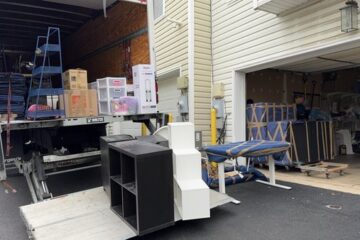Exploring the Complexity: Different Types of Load in Structural Engineering

Structural engineering involves the analysis and design of buildings, bridges, dams, and other structures to ensure their safety, durability, and functionality. Central to this discipline is the understanding of various types of loads that structures may encounter during their lifespan. From static dead loads to dynamic environmental forces, structural engineers must consider a multitude of factors to create robust and resilient designs. In this article, we delve into the complexities of different types of load in structural engineering, examining their characteristics, effects, and significance in the built environment.
Understanding Different Types of Load in Structural Engineering:
Dead Loads:
Dead loads, also known as static loads, refer to the weight of the structure itself and any permanent fixtures or components. These loads include elements such as walls, floors, roofs, and foundational materials. Dead loads are constant over time and provide the foundation for calculating structural capacity and stability.
Live Loads:
Live loads are dynamic forces resulting from the occupancy or use of a structure. Examples include the weight of people, furniture, vehicles, or equipment within or on the structure. Structural engineers must account for live loads to ensure that structures can support varying weights and activities without compromising safety.
Environmental Loads:
Environmental loads encompass external forces exerted by natural elements such as wind, snow, rain, temperature fluctuations, and seismic activity. These loads can vary significantly based on geographical location, climate conditions, and local regulations. Structural engineers employ advanced analysis techniques to assess and mitigate the impact of environmental loads on structures.
Impact Loads:
Impact loads result from sudden, impulsive forces applied to a structure, often exceeding the typical static or dynamic loads it experiences under normal conditions. Examples include vehicular collisions, machinery malfunctions, or falling objects. Structural engineers must consider potential impact loads to prevent structural failure and ensure safety.
Thermal Loads:
Thermal loads arise from temperature variations within a structure, leading to expansion, contraction, and thermal stress. Materials expand when heated and contract when cooled, exerting internal forces that can affect structural integrity. Thermal loads are significant in structural engineering, particularly in applications involving temperature-sensitive materials.
Seismic Loads:
Seismic loads, also known as earthquake loads, result from ground motion caused by seismic activity such as earthquakes or tremors. These loads subject structures to horizontal and vertical accelerations, causing them to sway or vibrate. Structural engineers utilize seismic design principles and codes to ensure that structures can withstand seismic forces and minimize the risk of collapse or damage.
Conclusion:
Understanding the different types of load in structural engineering is essential for creating safe, resilient, and sustainable structures. From dead loads and live loads to environmental, impact, thermal, and seismic loads, structural engineers must consider various factors to ensure structural integrity and safety. By incorporating advanced analysis techniques, computational tools, and design principles, structural engineers can develop innovative solutions that meet the needs of society while enhancing safety and minimizing risks. Types Of Load In Engineering form the foundation of structural design, shaping the built environment and advancing technological progress.
Leave a reply
You must be logged in to post a comment.











